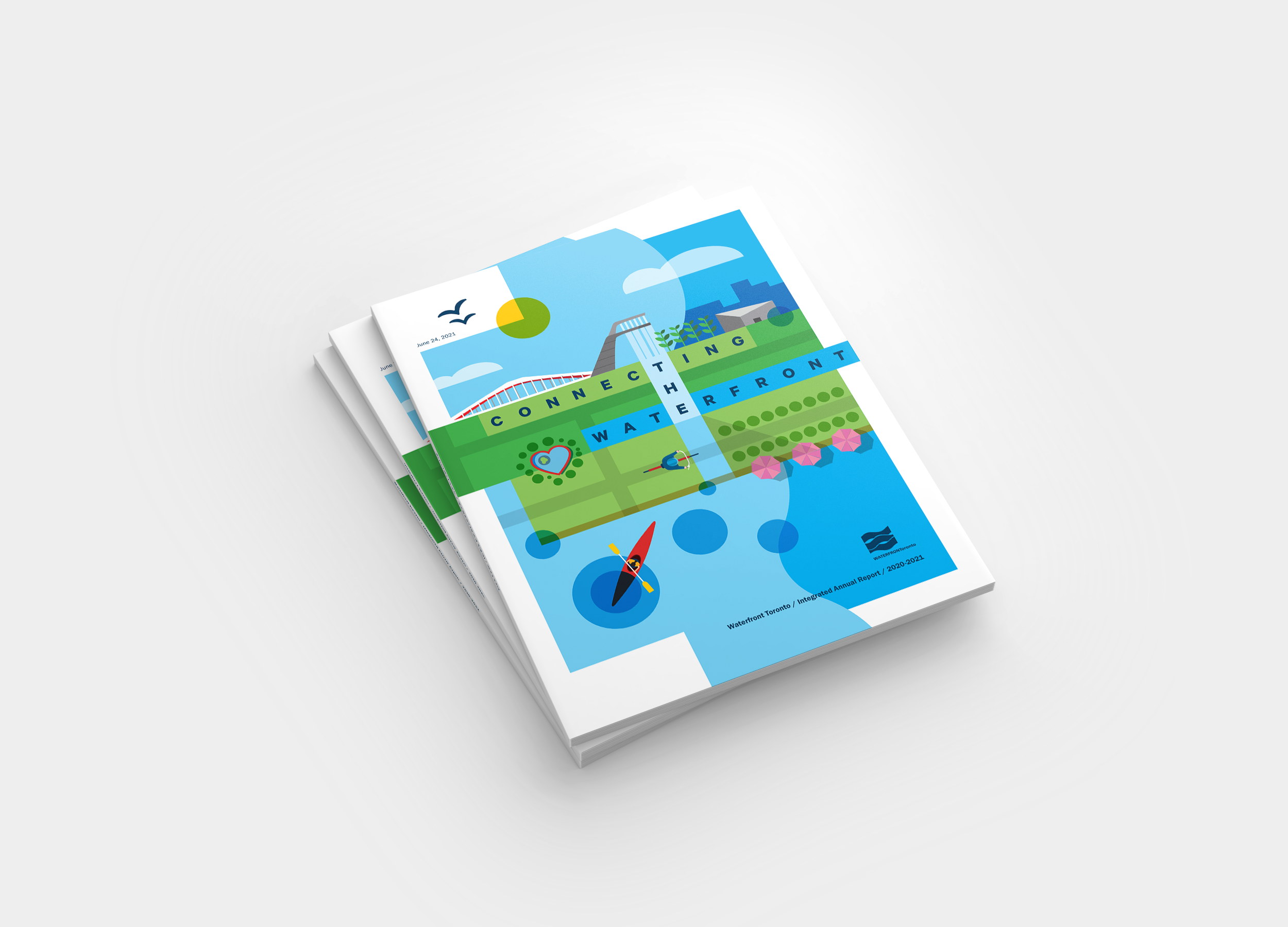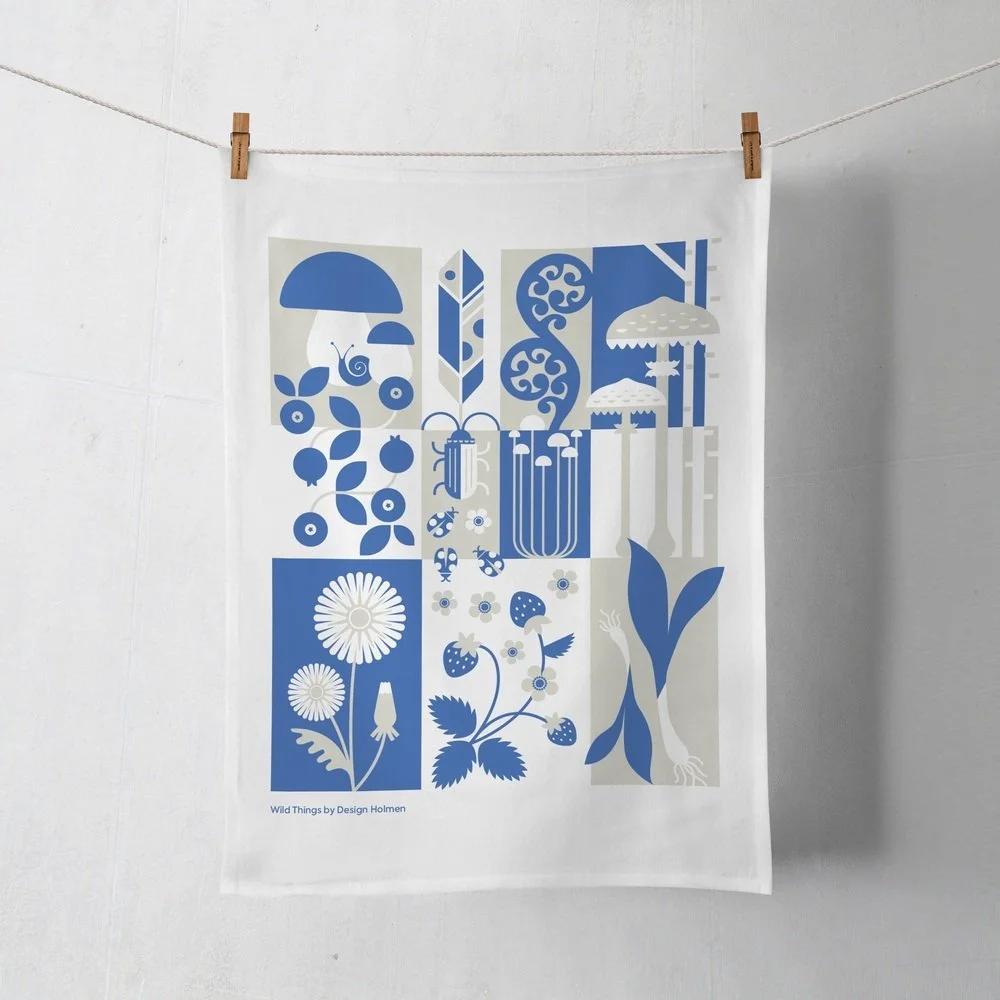Made in Toronto—How Carolina designed her own journey: Solo but Not Alone
Welcome back to Made in Toronto—your inside look at the creative minds shaping the city’s design scene. In this edition, we sit down with Carolina Soderholm, founder of Design Holmen, a top-tier studio with over two decades of global experience in design and branding.
Carolina shares the real story behind the studio’s beginnings, the day-to-day of running a business solo, and how aspiring designers can carve their own paths. From big decisions to creative collaborations, her journey is packed with insight and inspiration. Let’s dive into the conversation.
The Story of Carolina’s Professional Journey
Carolina, originally from Sweden, studied communication design at Emily Carr University in Vancouver and spent a year at Parsons in New York. Early in her career, she interned at a New York agency and briefly worked at an ad firm in Sweden before moving to Canada. After graduating, she joined Karo Design in Vancouver, a multidisciplinary studio where she gained experience across interior, web, graphic, and environmental design. She went on to work at Kaldor Design before relocating to Toronto, where she spent six years at Bruce Mau Design. In 2011, seeking more flexibility and creative independence, she founded her own studio, Design Holmen. In 2017, she co-founded Field Trip & Co., later returning to focus solely on Design Holmen, which she continues to lead today.
Waterfront Toronto (Editorial Design), Design Holmen
Fennario Meadows (Brand Identity, Print Design, Packaging, Teaser Site), Design Holmen
Initial Challenges
Yatri: What were your initial challenges in starting a design business?
Carolina: There’s so much no one tells you when you start your own business—like how much time you’ll spend on admin, taxes, paying yourself, and just figuring out how to keep it all balanced. That first year? Total hot mess. I learned fast, though. One of the toughest parts was the 30% rule—spending that chunk of time on new business while also doing the actual work. When you’re solo, it’s easy to stay buried in projects and forget to chase the next one. I was lucky to leave Bruce Mau with a major client who kept me busy for two years, so I didn’t feel the pressure right away. But in hindsight, I probably didn’t focus enough on building new relationships. My biggest advice? Always make time for new business—it’s easy to put off, but essential.
Yatri: How did you differentiate yourself from other agencies?
Carolina: For me, the pitch was simple: I had the experience of a mid-sized agency but without the overhead. That meant I could offer solid, professional work at a more accessible price point. I was hands-on with everything—from the first client meeting to the final design—so clients always knew exactly who they were working with. No account managers, no handoffs—just me, every step of the way.
By the time I started my studio, I had over a decade of experience, a strong portfolio, and trusted clients willing to refer me. Plus, I had a network of designers and agencies I could lean on. If I could give one piece of advice to someone thinking of starting out: don’t rush it. Build your experience first—those years in a studio teach you the business side of design, and that knowledge is invaluable when you go out on your own.
SPG (Smith Planning Group) (RGD Branding Awards winner: Best Rebrand 2023), Design Holmen
Yatri: How did you initially ensure financial stability?
Carolina: Honestly, my backup plan was my partner. No one invested in my business, but knowing we had a steady income in the household gave me the confidence to take the leap. I felt I could take the risk because we weren’t entirely dependent on my studio’s success in those early days. I know that’s a huge privilege—not everyone has that kind of safety net. If you’re flying solo or your partner’s also self-employed, the stress can be real. I’m incredibly grateful to have had that stability behind me—it made all the difference.
Yatri: How did you handle the legal side of things?
Carolina: I don’t remember having one big sit-down moment where someone laid it all out for me—but somewhere along the way, I figured it out. I think I just dove in, did the work, and then suddenly tax season hit, and I realized, oh, there’s a whole other side to this. That’s when I started asking the important questions—should I be incorporated or remain a sole proprietor? What actually makes the most sense long term?
I brought those questions to my accountant, and that conversation ended up shaping how I ran my business moving forward. It wasn’t a neatly planned process—it was more learning by doing, figuring things out as they came up. And honestly, that’s how a lot of it has gone. You don’t always start with a roadmap, but you build one as you go.
The Bentway (Branding, Wayfinding, Print Design), Design Holmen
Growing and Managing
Yatri: Do you have a niche?
Carolina: I never set out to have a niche—but one kind of found me. Early on, one of my biggest clients was in placemaking, and that opened the door to some incredible projects. I got to work on: The Bentway, collaborate with Waterfront Toronto, Fogo Island Inn and partner with a number of architects. Those opportunities kept rolling in, and while I’ve always loved the variety of my work, placemaking projects have been a consistent thread throughout my career.
I know having a niche can be smart from a business standpoint, but I’ve always valued the freedom to take on different types of work. That said, if I had to point to one area that keeps showing up—and one I really enjoy—it’s definitely those large-scale, placemaking projects.
Yatri: What methods do you use to land clients other than referrals or word of mouth?
Carolina: I use LinkedIn a little, but not heavily—and honestly, Instagram feels more like a designer-to-designer space than a real client magnet. I don’t think I’ve ever landed a client through Instagram… until recently! I just applied for a grant through Digital Main Street (a Canadian government initiative) and used it to hire a web company to boost my SEO. We did a full overhaul of my site, optimized everything, and I’m really hopeful it’ll make it easier for potential clients to actually find me online. That feels like a worthwhile step.
Beyond that, there’s always good old-fashioned networking. I attend RGD events, reach out to past clients—sometimes just to reconnect, sometimes to see if they need more work or know someone who does. I’ll ask for testimonials or Google reviews, too. Most of my work has come through word of mouth, and I know I’m lucky in that—it’s not something everyone can rely on. But even with that, you can’t just sit back. You have to keep putting yourself out there, in whatever ways feel right for you.
Yatri: What kind of pricing structure do you use?
Carolina: Yeah, over time I found a rhythm that works when it comes to pricing. For really small tasks—like a quick fix or a one-off request—I usually go with an hourly rate. It’s just simpler for both sides. But for most projects, especially branding, I price based on phases of work.
My branding process typically has three phases: research, design, and rollout. The design phase in the middle tends to be pretty consistent—most clients don’t need a dozen options, and honestly, giving too many can create confusion. But the first and last phases? Those vary a lot depending on the client’s needs.
Sometimes the research is a full-on strategy phase with workshops, naming, and brand positioning. Other times, it’s just a kickoff meeting and a mood board. Same goes for the rollout—some clients want a full brand guide, others just need a few polished assets. So that flexibility really shapes how I price things.
Most of the time, I work on a project-based fee. But for ongoing clients—especially ones I’ve built a relationship with—I’ll often shift into a retainer model. I’ll say, “You’ve got me for 20 hours this month,” and they pay for that block of time. It’s a great way to stay involved without starting from scratch every time.
Yatri (follow-up): When pricing for the whole project, how do you handle situations where clients give a lot of revisions or take advantage of that structure?
Carolina: It hasn’t happened often, but I do remember one client where we had to part ways. She kept asking for endless revisions—dozens of logo versions—and it became clear she was using me more like a sketchpad than a designer. To her credit, she paid for the work, but it taught me something important: when the up front work isn’t clear, the whole project can unravel. You need to be in alignment with your client before starting the design work. When you invest in strategy, get client buy-in early, and align on the goals and principles before you begin design, the rest tends to flow. You’re not just guessing what the client wants—you know.
So my advice? Don’t skip or skimp on the discovery phase. It’s where the real clarity comes from. It saves time, reduces stress, and ultimately leads to better, more confident design decisions—for both sides.
Fogo Island Inn (Wayfinding, Print Design, Editorial design, Environmental design), Design Holmen
Fogo Island Inn (Wayfinding, Print Design, Editorial design, Environmental design), Design Holmen
Yatri: What do you look for when you hire or collaborate?
Carolina: Honestly, it really depends on the project. These days, I mostly hire on a project-by-project basis. I haven’t brought on any full-time employees—except for that two-year stretch when I was running Field Trip & Co. with my partner.
When I’m bringing someone on for a project, I’m not necessarily looking for the “perfect personality.” At that point, I usually already have a solid roster of designers I trust—people I’ve worked with before, who I know will deliver, and whose skill sets match the project. So it’s more about the right fit for the work than anything else.
Now, if I was hiring someone full-time at Design Holmen? That’s a different story. Personality really does start to matter then, because you're interacting with that person every single day. Of course, I’d look at their portfolio to see the kind of work they’ve done. Sometimes I’m looking for someone with skills I just don’t have—like web design, which isn’t really my thing.
But beyond that? I’d love to work with someone smart, someone with a sense of humour, someone who’s curious and has a range of experience. Basically, someone I’d actually enjoy collaborating with and continue to learn from.
Yatri: If you could start over, would you do anything differently?
Carolina: If I’m being honest, sometimes I wonder what things would’ve looked like if I’d taken a different path. Maybe if I were starting over, I wouldn’t have launched my own studio. Maybe I would’ve stayed at Bruce Mau, or joined another agency. I do miss being part of a team sometimes—having coworkers around, that creative energy bouncing around the room. There’s something really special about that.
And part of me does think, “Hey, if I’d stayed in a studio, maybe by now I’d be some kick-ass creative director at a big agency.” But at the same time… that was never really my dream. I’ve always been trying to balance work with family life, and that kind of high-intensity agency world—with the travel and stress and long hours—makes that balance really tough.
What I did want was to be a really strong designer, to do meaningful, beautiful work, while also showing up for my family. And I think I’ve managed to do that. I’m proud of that. I’m proud that I’m still running the studio I started back in 2011, and that I’ve made it work on my own terms.
Swedish folk art-inspired goods designed by Design Holmen
Advice to design entrepreneurs
If you're just out of design school, my biggest advice is: don’t rush to start your own studio. Go work at an established design firm first—learn how things actually run, gain experience working with clients, and see how teams collaborate. That time is incredibly valuable, not just for sharpening your skills but for building relationships. Many of the clients and opportunities I had when I eventually went out on my own came from people I’d worked with early on. So take the time to grow, learn, and build your network—it’ll set you up for a much stronger start when you do decide to launch your own thing.
Takeaways
Build experience and relationships in a studio before going solo—it’s the foundation for future success.
Don’t underestimate the business side of design—admin, taxes, and new client outreach are part of the job.
Clear communication and strategy upfront prevent endless revisions and lead to better design outcomes.
Define success on your own terms—balancing meaningful work with personal life is a win worth aiming for.
Connect with Carolina:
Website: https://www.designholmen.com/
LinkedIn: https://www.linkedin.com/in/carolina-soderholm-292b0740/









